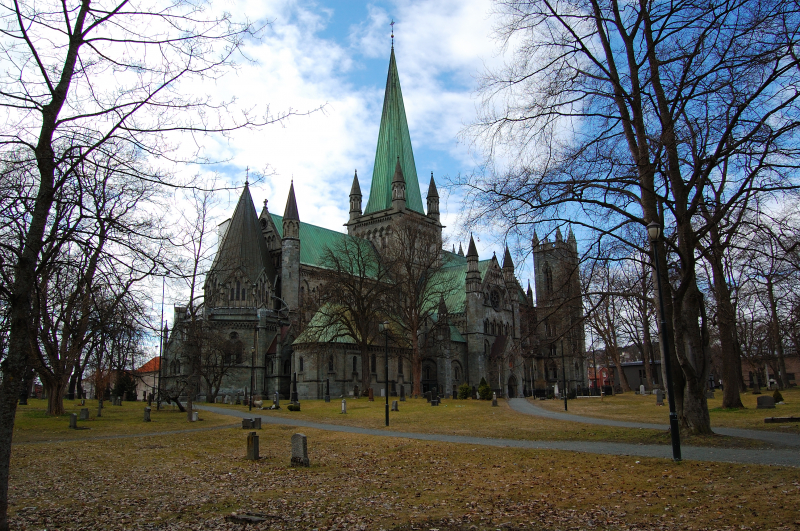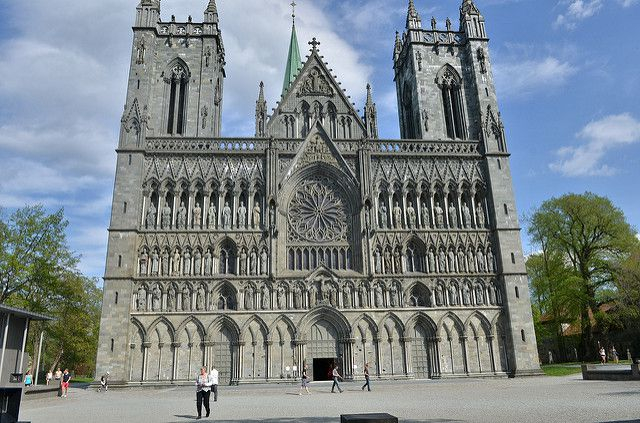Nidaros Cathedral
Nidaros Cathedral in Trondheim, considered a national shrine, was built over the burial site of Olav Haraldsson, afterwards St. Olav, Norway's first Christian ruler. Nidaros Cathedral was created in its original form in the second half of the 11th century, and building lasted for at least a hundred years.
St. Olav, the Viking monarch who brought Christianity to Norway, is buried underneath the church. During the Middle Ages, a silver coffin containing St. Olav's remains was placed on the cathedral's high altar.
The shrine, however, was transferred to Denmark during the Reformation to be transformed into silver coins, and Olav's ashes were buried in a secret location within the church. No one knows where it is to this day.
Work on the cathedral began around 1070 and was completed around 1300. The cathedral was in bad shape after many fires and a lack of care in the Middle Ages. Large-scale restorations began in 1869, and the cathedral is now restored to its former glory.
The stained-glass was created in the early twentieth century. The sculptures on the west front were created by well-known Norwegian artists, with the most recent being installed in 1983. The crypt, located beneath the nave, contains medieval headstones.
The cathedral now is largely Gothic in style and exhibits the results of a major 19th-century restoration project. The cathedral's main façade, on the western side, features a large rose window flanked by beautiful statuary and stained-glass decorations. Inside, these windows are revealed in all their grandeur, with their brilliant hues creating a stunning display.
It truly deserves the title of one of the most beautiful historical sites in Norway.Location: Trondheim, Norway












